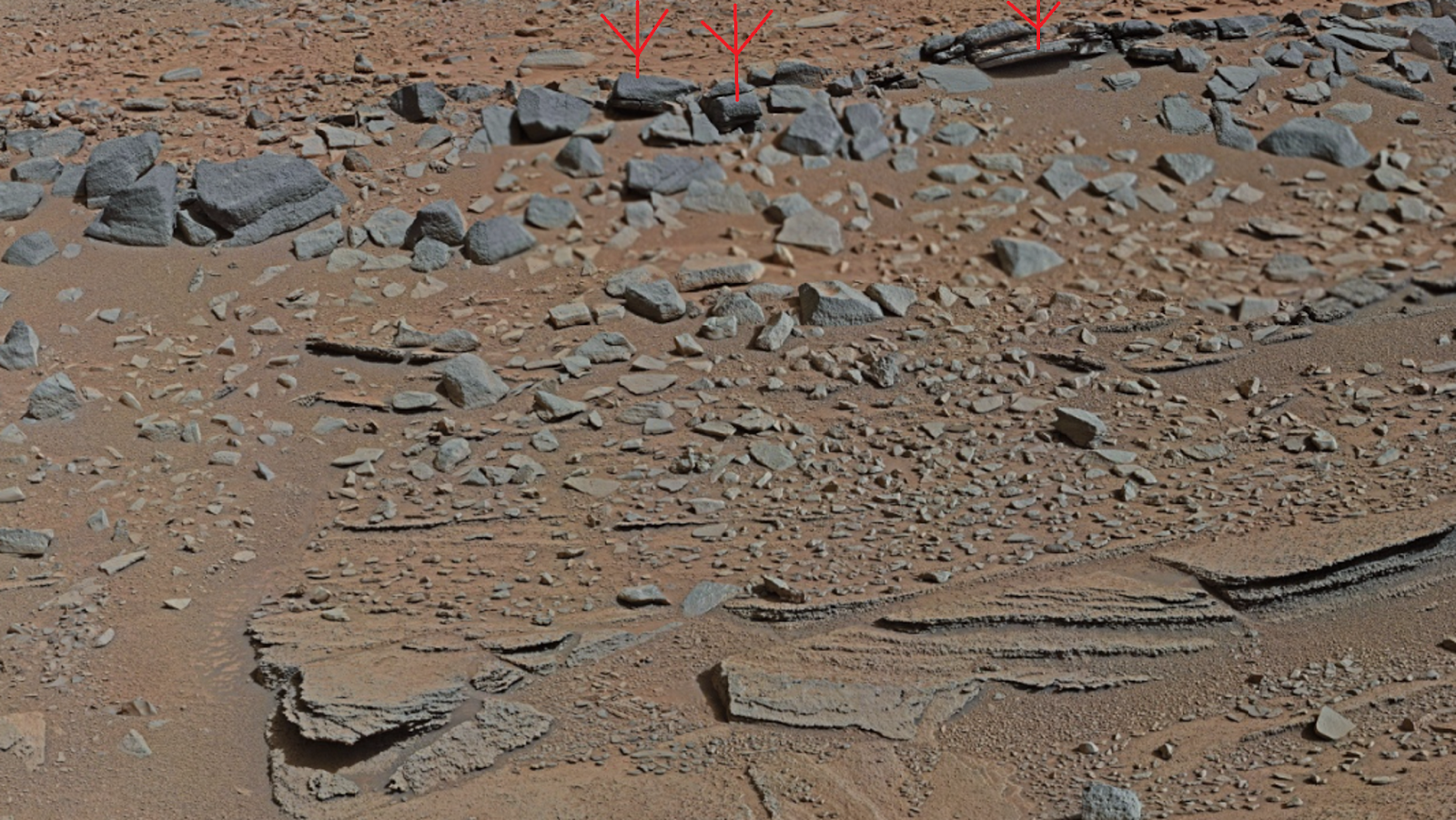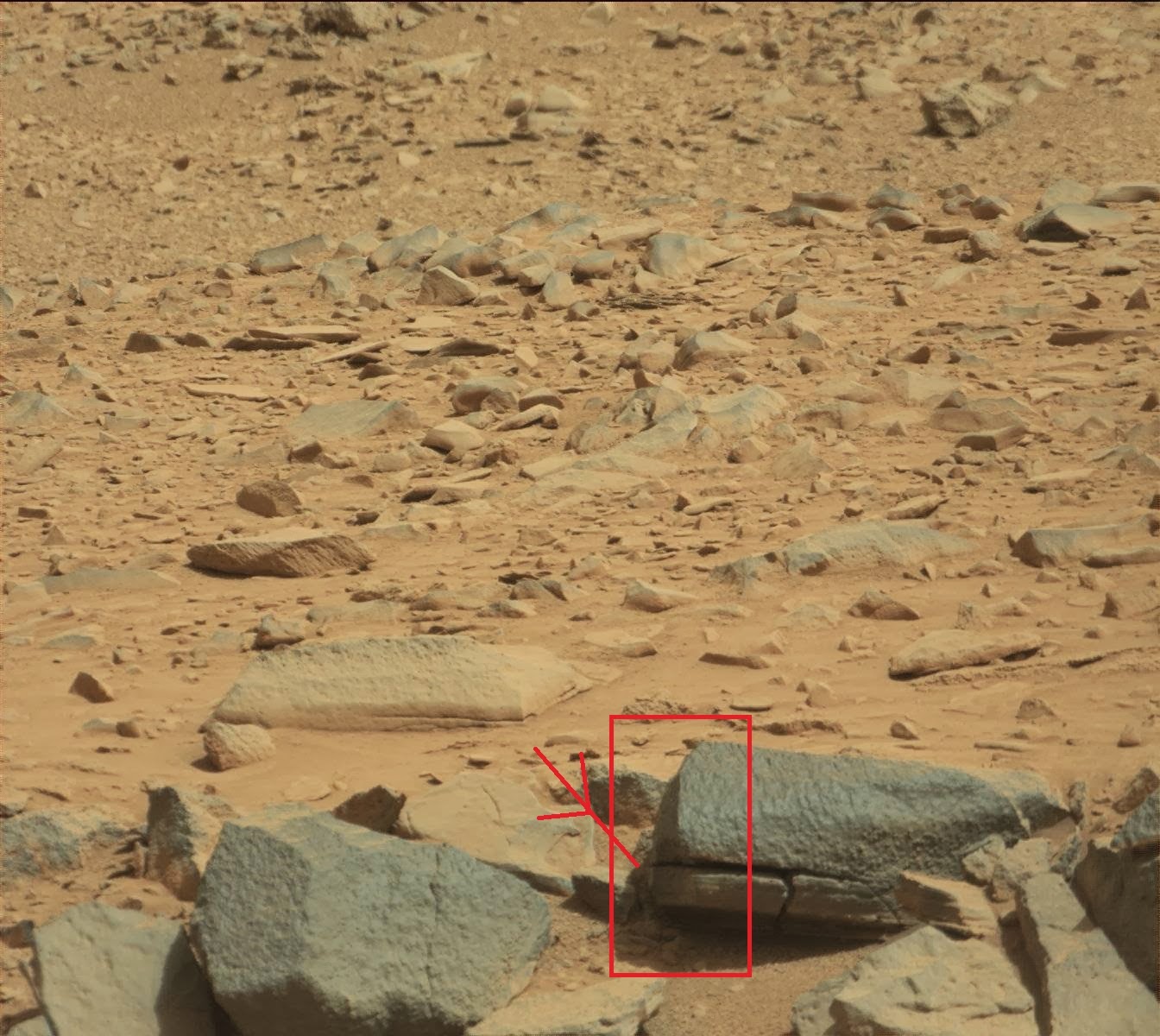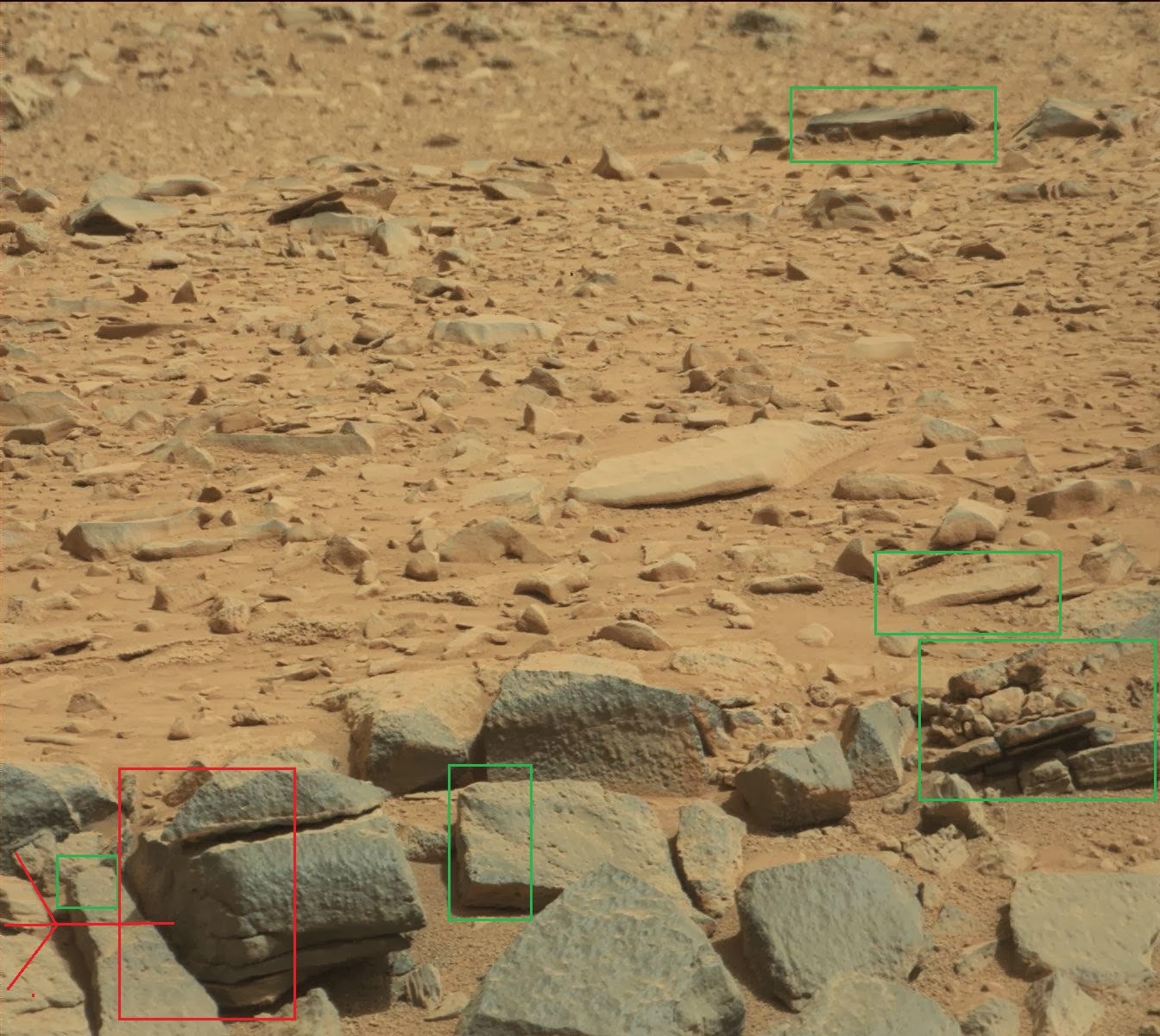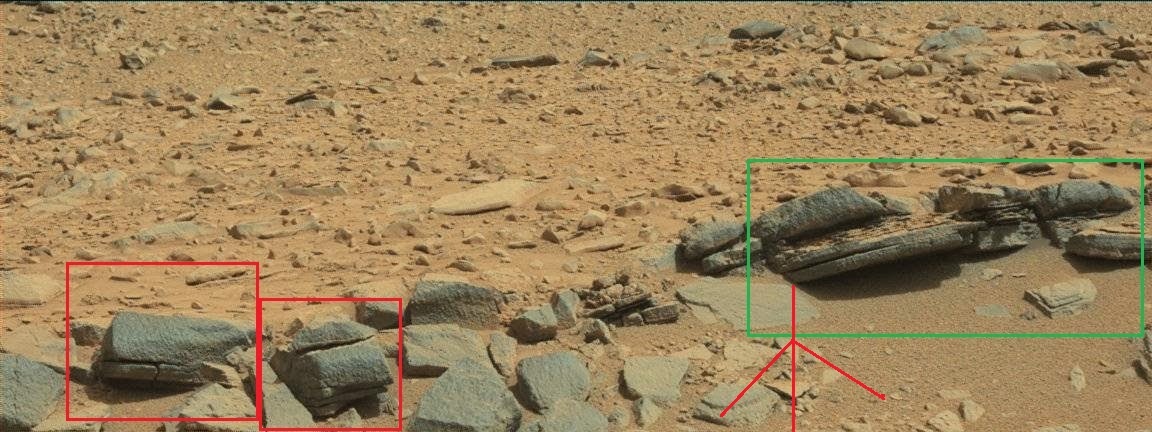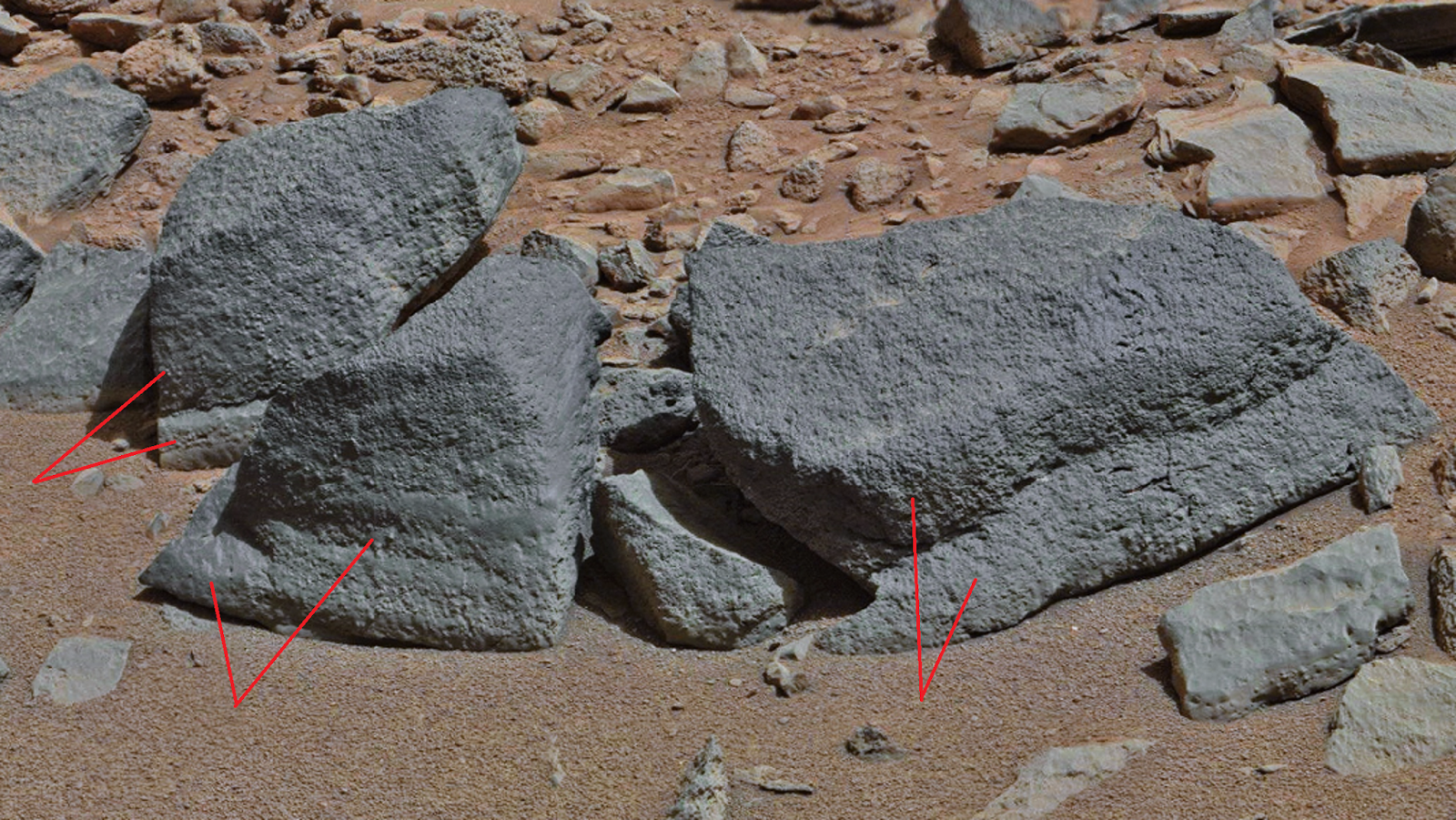| Online: | |
| Visits: | |
| Stories: |

| Story Views | |
| Now: | |
| Last Hour: | |
| Last 24 Hours: | |
| Total: | |
Artificial Landscape on Mars
The following is just one of numerous artificial landscapes on Mars that are still fooling many Earthlings (notes 1, 2). Yesterday I was reviewing one of my previous posts (note 3) and felt I need to elaborate on the reasons why the following objects are not rocks on Mars:
Red arrows point to objects that are not rocks on Mars. Location: Shaler in Gale crater, Mars. Snapshot from center top of original panorama at
In this case, the above objects were originally formed right at/near the present site, not transported from far away. The reason: The objects are relatively large, articulated to the ground (note red arrow points in following photos) and lined up in/near a straight line, so they could not have been transported from far away by wind or water or land slide, etc.
Note 3: see also original post at
http://wretchfossil.blogspot.tw/2013/07/why-these-are-concrete-blocks-molded-by.html
Added on Oct. 28, 2015: Explanations
The sand could have been transported from elsewhere. But the chunky objects and the large plates were originally formed at the present site and eroded later. NASA claims the objects are sedimentary rocks with basaltic composition. One problem is how sedimentary rocks can contain basaltic composition. Another problem is how mineral deposition could form large chunks next to sand and large plates? Are the large plates really cross bedding as NASA claimed ? Does cross bedding on Earth lie next to chunky objects and sand? My answers to the above questions are simple: The chunky objects are broken concrete. The large plates are a kind of artificial stones that expose their laminated sheets owing to erosion.
Added on Oct. 29, 2015: Evidence for concrete and artificial stones
Texture of concrete blocks in the first photo above:
http://wretchfossil.blogspot.tw/2015/07/how-can-this-be-rock.html?q=artificial+stone+found
Source: http://wretchfossil.blogspot.com/2015/10/reasons-why-these-are-not-rocks-on-mars.html




